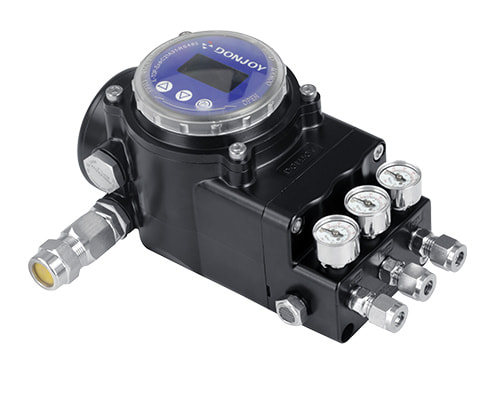Your Position: Home - Valve Parts - Basic Knowledge and Selection of Intelligent Valve Positioners
The intelligent valve positioner forms a crucial component in modern industrial automation frameworks. Its primary role centers around the precise regulation of valve positions, allowing for accurate control over fluid mediums, which can include gases and liquids. This device picks up electrical signals transmitted from control units, such as Programmable Logic Controllers (PLC) or Distributed Control Systems (DCS), and transforms these signals into the force necessary to move the valve, ensuring it arrives at the designated position both quickly and accurately.
To understand its functioning, we can break it down into four essential steps: signal reception, signal processing, drive execution, and position feedback. Initially, the intelligent valve positioner captures the electrical signals from the control unit. Next, the internal circuitry processes these signals, converting analog signals into digital formats while also amplifying and calibrating them. Subsequently, drawing from these processed signals, the drive mechanism generates the requisite force to actuate the valve's movement. Finally, employing a position sensor, the actual valve position is monitored, and this data is relayed back to the control unit, establishing a closed-loop control system that guarantees precise valve positioning.

Intelligent valve positioners are distinguished by a variety of key technical characteristics:
1. Precise Control: Utilizing state-of-the-art control algorithms alongside accurate feedback mechanisms ensures exceptional control over valve positioning.
2. Rapid Response Times: These positioners boast quick reaction capabilities, enabling them to promptly follow the commands from the control system for swift valve management.
3. Enhanced Stability: The incorporation of advanced structures and materials, coupled with rigorous manufacturing protocols, ensures stable operation even in demanding environments.
4. High Intelligence: Equipped with multiple operational modes and self-diagnostic features, these devices can automatically adjust to various working conditions and valve attributes, helping to reduce maintenance expenses.
5. Seamless Integration: Standardized communication interfaces and protocols ease the process of melding with different control systems.
When selecting a smart valve positioner, the following factors should be taken into account:
1. Type of Valve: Various valve types, such as rotary or linear valves, necessitate different positioner types. Therefore, choosing a positioner compatible with the valve type is critical.
2. Environmental Conditions: The operational environment—encompassing temperature, humidity, and pressure—can significantly influence performance; thus, a positioner that can withstand these conditions is essential.
3. Control Accuracy: It’s crucial to choose a positioner that fulfills the specific accuracy requirements determined by process flow needs.
4. Communication Standards: Ensuring compatibility with the control system's communication protocols is vital for seamless operation.
5. Cost Consideration: It's important to evaluate the total cost, factoring in both purchase and maintenance costs, without compromising on performance requirements.
1. Define Requirements: Begin by specifying the precise requirements regarding accuracy, response time, and stability for valve control.
2. Conduct Market Research: Explore leading smart valve positioners available, assessing their features, performance metrics, and user reviews.
3. Perform Comparative Analysis: From the research, select suitable positioners and conduct a comparative analysis based on performance, pricing, service, and more.
4. Field Trial: If feasible, perform a field test to validate the positioner's effectiveness.
5. Final Selection: Utilize the findings from the trial evaluations to choose the most appropriate intelligent valve positioner.
By following these outlined steps, users can confidently select an intelligent valve positioner that delivers robust performance, favorable pricing, and dependable service, thereby ensuring the reliable operation of industrial automation systems.
Common Questions:
What are the advantages of using intelligent valve positioners over traditional ones?
Intelligent valve positioners offer enhanced precision, faster response times, and additional features such as self-diagnostics and adaptability to various conditions, which traditional positioners typically lack.
How often should the intelligent valve positioners be maintained?
Regular maintenance is recommended, typically once a year, but it may vary based on the operating conditions and manufacturer guidelines.
Can intelligent valve positioners work with any control system?
While many intelligent valve positioners come with standardized communication interfaces, it’s essential to confirm compatibility with the specific control system in use.
134
0
0
Comments
All Comments (0)